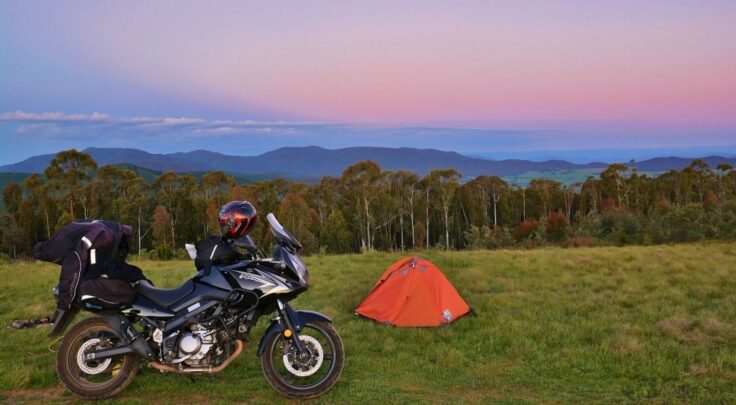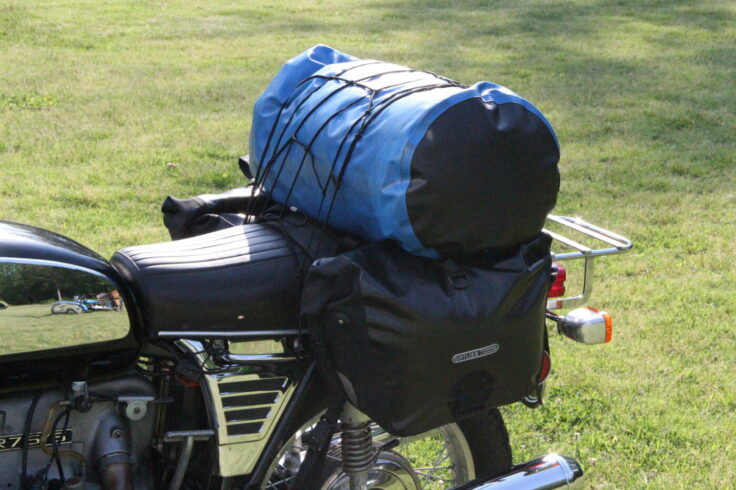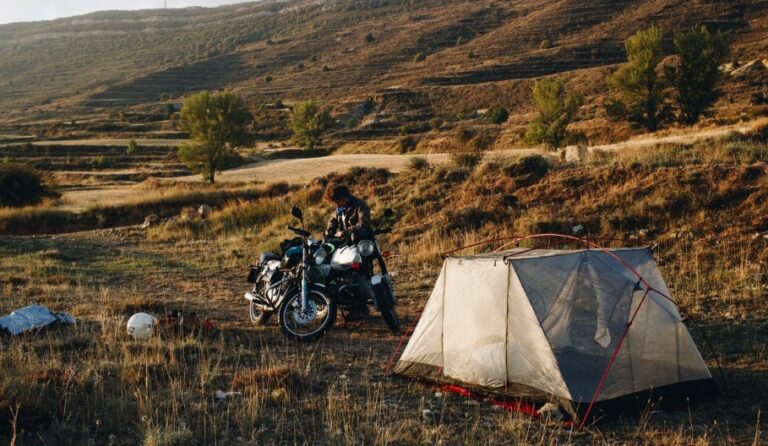The thrill of the open road, the wind in your hair, and the freedom to explore at your own pace are some of the many reasons motorcycle enthusiasts are drawn to motorcycle camping. Combining the joy of riding with the camping adventure can create unforgettable experiences.
However, for beginners, it can be a bit daunting to embark on this exciting journey without proper guidance. So, to help you out, we’ll guide you through every aspect of motorcycle camping for beginners, from essential gear and planning tips to safety considerations and camping etiquette.
By the time you finish reading, you’ll be well-prepared to hit the road and camp under the stars on your trusty two-wheeler.
Choosing the Right Motorcycle

Before you set off on your motorcycle camping adventure, it’s crucial to ensure that your bike is up for the task. Not all motorcycles are created equal when it comes to carrying camping gear, so there are two things you must consider.
First, think about the type of motorcycle you own. Adventure touring bikes, dual-sport bikes, and cruisers with luggage options are often the top choices for camping due to their versatility and capacity to carry gear. Make sure your bike can handle the additional weight without compromising its stability and handling.
Second, check your bike’s maintenance. Ensure that it’s in good working condition and has been recently serviced. The last thing you want is a breakdown in the middle of nowhere.
Essential Gear and Packing Tips

Now that you’ve chosen the right motorcycle, it’s time to pack the essentials for your camping adventure. Proper packing is key to a comfortable and enjoyable trip. Here are some essential items and packing tips:
- Tent and Sleeping Gear: Invest in a compact, lightweight tent that can be easily attached to your bike. Consider a sleeping pad and a suitable sleeping bag to ensure a good night’s sleep.
- Cooking Equipment: Portable camp stoves, cookware, and utensils are essential for preparing meals on the go. Opt for compact and durable options.
- Clothing and Rain Gear: Pack appropriate clothing for the weather conditions you expect to encounter. Don’t forget rain gear to stay dry in unexpected downpours.
- Tool Kit and Spare Parts: A basic tool kit can help you handle minor repairs on the road. Carry spare parts like fuses, bulbs, and a tire repair kit.
- Navigation and Communication: GPS devices or smartphone apps with offline maps can be invaluable for navigation. Ensure your phone is charged, and consider a portable charger.
- First-aid Kit: Safety should always be a priority. Pack a well-stocked first-aid kit and familiarize yourself with its contents and basic first-aid procedures.
- Entertainment: Bringing something to do during downtime is necessary. It helps you unwind, no matter where you are. For example, you can click here to find the best rc planes Australia has to offer for when you’re motocamping in the outbacks or keeping up with your favorite shows while relaxing inside your tent on the Appalachian Trail.
Planning Your Route and Campsites

Planning is the key to a successful motorcycle camping trip. Hence, research potential routes and campsites in advance. Consider factors such as distance, terrain, and available amenities when choosing your route. Interactive mapping tools and motorcycle-specific apps can also help you plan your journey effectively.
When it comes to selecting campsites, prioritize safety and convenience. Look for established campgrounds with amenities like restrooms and potable water, especially for your first few trips. As you gain experience, you can explore more remote and primitive camping options, but always adhere to Leave No Trace principles to minimize your environmental impact.
Safety Considerations and Riding Tips
Safety should be a top priority throughout your motorcycle camping adventure. Here are some essential safety considerations and riding tips:
- Rider Gear: Always wear appropriate safety gear, including a DOT-approved helmet, riding gloves, armored jacket, and protective pants or riding suits.
- Visibility: Make sure you’re visible to other motorists. Consider adding reflective gear or accessories to your riding attire and bike.
- Riding Skills: Take a motorcycle safety course if you’re a beginner. Practice emergency maneuvers and riding on various terrains to build confidence.
- Weather Awareness: Stay informed about weather conditions along your route and be prepared to adjust your plans if necessary.
- Group Riding: If traveling with others, establish communication and riding protocols to ensure safety on the road.
- Emergency Plan: Have a plan for handling emergencies, including contacting emergency services and roadside assistance if needed.
Camping Etiquette and Leave No Trace Principles
Responsible camping is essential to preserve natural beauty and protect the environment for future generations. When camping in natural areas, adhere to Leave No Trace principles, which include:
- Pack It In, Pack It Out: Leave your campsite as you found it, without litter or debris.
- Minimize Campfire Impact: Use established fire rings and follow local regulations regarding campfires.
- Respect Wildlife: Observe wildlife from a distance and avoid feeding them.
- Stay on Designated Trails: Stick to designated paths and avoid creating new ones to protect fragile ecosystems.
- Dispose of Waste Properly: Use established restroom facilities or follow guidelines for waste disposal in the backcountry.
If you follow these principles, you’ll contribute to the preservation of the natural beauty of the places you visit and ensure that others can enjoy them in the future.
Conclusion
Embarking on a motorcycle camping adventure as a beginner can be a thrilling and rewarding experience. With the guide above, you’ll set yourself up for a successful journey filled with unforgettable moments.
Remember that every trip is an opportunity to learn and refine your skills, so embrace the open road and the great outdoors with confidence. What are you waiting for? Gear up, rev your engines, and set off to experience the thrill of motorcycle camping!

